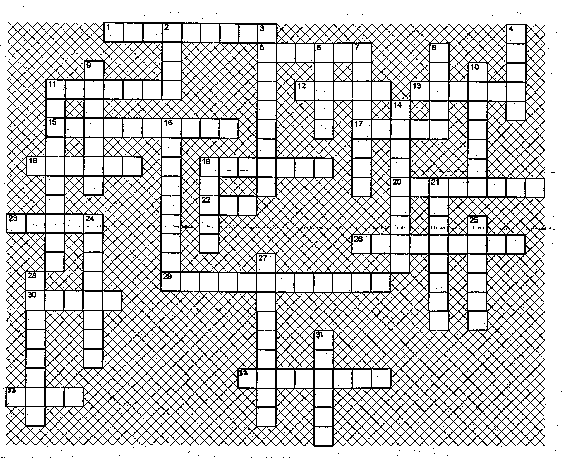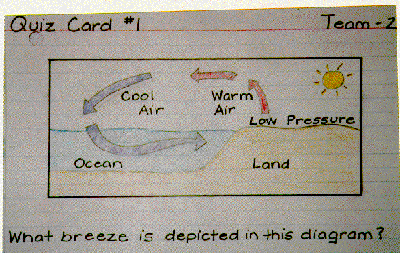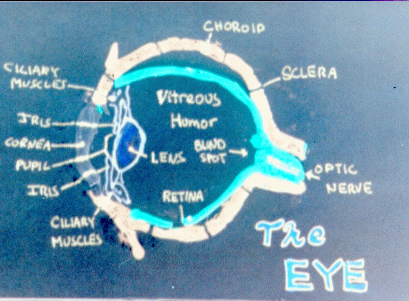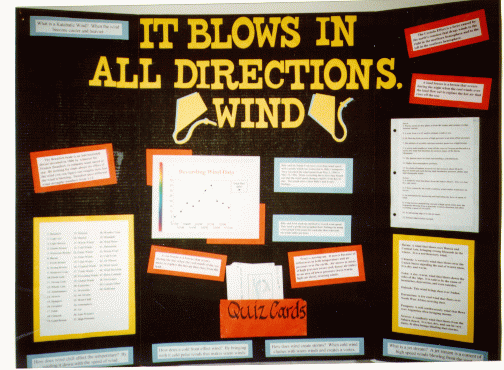Lessons
Step 1: Resources Listing
Create a research bibliography of 10 or more Internet\WWW resources containing information about the earth’s magnetosphere. You will use these resources to learn about the earth’s magnetosphere and other related space physics topics.
If necessary, check out your school and local library for non-internet materials (books, magazine articles, pamphlets, filmstrips, videos, etc.) that also contain information about the earth’s magnetosphere. Don’t forget about science textbooks or other reference material that may be in your classroom.
Use the “Resources Bibliography” format that follows to list your resources.
The Magnetosphere Project
Resources Bibliography
- The Dynamic Magnetosphere
http://www-spof.gsfc.nasa.gov/Education/Imsphere.html - The Aurora Watcher’s Handbook by T. Neil Davis.
University of Alaska Press. 1992: ISBN 0-912006-60-9 - The Aurora Explained , a 30 minute video.
University of Alaska Geophysical Institute, <Rose.Watabe@gi.alaska.edu>
Add ten more magnetosphere research resources that you discovered here
4…..
You can launch your magnetosphere research by linking to:
Space Weather Resources
You can also hunt for WWW resources about the earth’s magnetosphere. Try searching for: The Earth’s Magnetosphere, Planetary Magnetic Fields, Space Weather, Space Physics, Northern Lights, etc., by using any WWW “search engine” such as Google, Excite, or Yahoo.
Step 2: Magnetospeak
Assemble a list of 50 terms (words, phrases, or acronyms) that are unique to the earth’s magnetosphere. These Magnetospeak terms form the basic working vocabulary for your magnetosphere project. You will probably use all of your Magnetospeak terms during the composition of the individual project steps that follow.
List each term followed by a brief definition or explanation for that term. Condense the definition of the term so that it fits on two lines of typing.
Use the format below to organize your Magnetospeak terms.
- Magnetic Storm :
A disturbance of the earth’s magnetic field observable all around the globe. - Etc…
Step 3: Magnetoseek Questions
Develop 15 or more Magnetoseek Questions about the earth’s magnetosphere obtained from your Internet\WWW and/or supplemental resources. These questions should be thought-provoking and open-ended in style (not Yes-No questions) so that they will stimulate others to investigate your project to discover the answers.
To get started, review your Magnetospeak list (STEP 2) and use these terms to create your Magnetoseek Questions. You should read more of the materials you located in doing the research for STEP 1. If necessary, do some more “magnetosphere research”. Be sure and think about the answers to each Magnetoseek Question you create as you will need to supply an Magnetoseek Answer (STEP 4) for each one.
Use the format below to organize your Magnetoseek Questions:
- Magnetoseek Question #1:
What is a magnetic substorm? - Magnetoseek Question #2:
- Etc…..
Step 4: Magnetoseek Answers
Provide an Magnetoseek Answer for each of the Magnetoseek Questions which you created in STEP 3. Each answer must be complete, concise, and understandable. Make sure the number of your Magnetoseek Answer matches with the number of your Magnetoseek Question. Include an Internet\WWW reference (URL, ftp, etc.) or a library reference for each resource.
Use the format below to organize your Magnetoseek Answers.
- Magnetoseek Answer #1:
A magentic substorm is a disturbance of the earth’s magnetic field observable all around the globe. Reference: ( http://www-spof.gsfc.nasa.gov/Education/Imsphere.html )
or
Reference: (The Aurora Watcher’s Handbook: Reference Section, Milpitas Community Library) - Magnetoseek Answer #2:
- Etc…..
Step 5: Magnetospeak Match-Up Challenge
Choose 35 or more of the terms and their definitions from your Magnetospeak list to create a “Match-UP Challenge” that you will use to teach other people about the earth’s magnetosphere. Be inventive: construct a crossword, design a board game, a picture-matching game, etc. Use ONLY black of dark blue colors on your “Challenge” items so that they can be easily phoptocopied. Do not identify any part of your “Challenge” as STEP 5.
Include the following items in your Match-UP Challenge:
- An “Overview” that explains the purpose of your Challenge.
- A set of instructions explaining how to use the Challenge.
- The Challenge.
- An Answer Key.

A sample Match-up challenge
Step 6: Personal Expertise
Identify 5 different occupations that you could contact in order to get more information about the earth’s Magnetosphere. What qualifies the people working in these occupations as “magnetosphere experts”? Create an interview guide of 8 to 10 questions and interview two of your experts utilizing internet-based communications (Electronic Mail). Use the format below to record and report your Personal Expertise research information.
Use any WWW search engine such as Alta Vista or Excite to search for: Astronomers, Space Scientists, Space Physicists, etc.
If you are having trouble locating “experts” to interview, try linking to: Ask Dr. Geospace
Personal Expertise Magnetosphere Experts 1. Occupation: Qualifications: 2. etc. Contact Informtion Name Email Address Source (WWW URL, Phone Book, etc,) Interview Questions
Step 7: Illustrated Quiz Cards
Using your Magnetospeak list and your Magnetoseek Questions/Answers as a guide, design a set of 10 or more illustrated Quiz Cards using 13 X 18 cm. index cards. Each Quiz Card must contain at least one Internet-based graphic (picture, chart, graph, drawing, etc.) that you have created or obtained from your resources. The graphic serves as the basis for your Quiz Card question about the earth’s magnetosphere.
Use as few words as you can. Let your graphic “ask the question”. Place the answer to the quiz question on the back, center of the card. If you are creating a WWW page, allow for downloading the quiz card information.

Sample quiz card
Step 8: Briefing Booklets
Using your Magnetospeak list and your Magnetoseek Questions/Answers as a guide, create 3 Briefing Booklets for your Magnetosphere Learning Center. The booklets should be typed on half-sheets of paper and contain important information on different aspects of your magnetosphere research. Each booklet must have its own unique title and be 2 to 3 half-sheets long. Include 4 to 5 questions at the end of the each booklet for readers to answer.
Using graphics in your booklet can make it easier for readers to learn and understand material. A series of linked WWW pages can be used in lieu of typed booklets.
Step 9: Adding a New Dimension
Using any materials not prohibited by your teacher, add a New Dimension to your Magnetosphere Project by creating and constructing a three-dimensional model that depicts some aspect of the earth’s magnetosphere.
Choose a title for your model and write a typed description of what you have created that fits within a 10.6 by 17.7 cm rectangularly shaped area.
Your New Dimension model will become part of your Magnetosphere Learning Center. You may use parts from a commercial product, but you may not use an assembled model or a model made from a kit. Using animated graphics, video camera recordings, etc., you may create an original WWW graphic in lieu of a physical model.

Sample 3-D Model
Step 10: Research Report
Using your Magnetospeak list, your Magnetoseek Questions/Answers, your Briefing Booklets, and your WWW and library resource materials you obtained as a guide, write a 6 to 7 page report which summarizes what you have learned about the earth’s magnetosphere. Your report must be typed, double spaced, and include a Title page (see sample that follows).
Append your Resources Bibliography (STEP 2) to your report. A series of linked, WWW pages may be created in lieu of a typed report.
The Magnetosphere Project Research Report "Your Title" A study of the Earth's Magnetosphere prepared by "Your Name" for "Your Class Title" "Your School" "Date" "Your teacher"
Step 11: Title, Abstract, and Keywords
Choose an imaginative Title for your magnetosphere research project. Also create a 100 word Abstract (a technical summary) based on your report. Lastly, select 10 “Keywords” that will help researchers to determine if your Research Report contains the kind of information they require.
Display both your Title, Abstract, and Keywords on your Magnetosphere Learning Center using the format depicted below.
Title:
Abstract:
Keywords:
Step 12: Your Magnetosphere Learning Center
Design and construct a 3 panel, free-standing, tabletop Magnetosphere Learning Center which will display STEPS 1 through 11 of your magnetosphere project so that others can benefit from your research. Your Learning Center’s height, width or depth should be no more than 1 meter.
Post attractive and significant information on the 3 upright panels using pictures, charts, graphs, drawings, photographs, etc. Make titles and key points large enough to be readable from 1 to 2 meters away. Choose colors that are appealing and attention getting. A series of linked WWW pages can be used in lieu of a free-standing tabletop display.

Sample learning center
